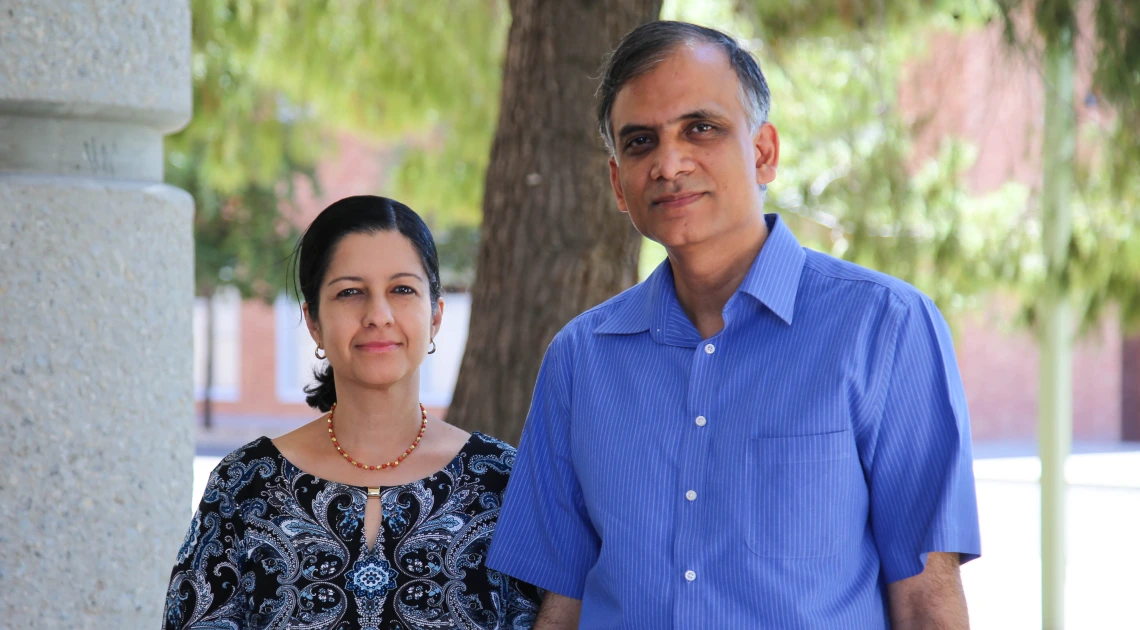Tech Blog: Preventing C. difficile from gaining a foothold in the gut

|
Listen to the fourth episode of our podcast, Invented Arizona, where we speak with Gayatri Vedantam and 'Vish' Viswanathan about their prevention and treatment method for Clostridium difficile infection.
|
If you’ve ever experienced a bacterial infection, it is likely that you were treated with antibiotics. While antibiotics are effective in eliminating many harmful bacteria that cause disease, they can also destroy normal bacteria that are beneficial to intestinal health [1]. One nasty pathogen, Clostridium difficile, also known as C. difficile or just Cdiff, actually benefits from this unfortunate ‘side-effect’ of antibiotics.
Cdiff exists in the environment as hardy spores in a range of places including food products, surfaces, and human and animal feces. When Cdiff enters the body, it is unable to cause disease because the normal gut bacteria keep the pathogen in check. When a patient is prescribed antibiotics for an unrelated infection, or to prevent post-surgical infections, most of the normal gut bacteria are eliminated, and Cdiff uses this opportunity to ‘step in’ and cause disease.
Those affected most commonly experience diarrhea multiple times a day and, ironically, additional antibiotics are prescribed to now treat the Cdiff infection. Cdiff is responsible for nearly a million cases of diarrhea in the United States, especially in the vulnerable healthcare-associated population, and has been designated as an ‘Urgent threat’ by the Centers for Disease Control and Prevention.
Gayatri Vedantam, Ph.D. and ‘Vish’ Viswanathan, Ph.D., Professors in the School of Animal & Comparative Biomedical Sciences at the University of Arizona College of Agriculture and Life Sciences, teamed up to find a way to harness good bacteria in the fight against Cdiff.
“This technology is based on the premise that if we use good bacteria to fill in the gut landscape opened up by antibiotic treatment, we can prevent Cdiff from occupying those niches”.
Using genetic engineering, they manipulated good/safe bacteria to express the very proteins that are expressed on the Cdiff surface, and that help the pathogen to colonize the gut. Pre-colonizing the GI tract with the engineered organism blocks Clostridium difficile from colonizing and causing disease. While Vedantam and Viswanathan’s technology is aimed at preventing Cdiff infection, the hope is that this strategy will also be effective in knocking any existing C. difficile organisms “off their perch”, thereby also acting as a therapeutic option.
Over time, Cdiff bacteria have exhibited “incredible genetic diversity”, with over 500 different molecular types occurring worldwide. To ensure efficiency, this technology is specifically engineered to be widely applicable, and prevent infection caused by multiple different Cdiff strains.
Vedantam and Viswanathan also ensured that their technology will be available for humans and animals in an oral yogurt-type or a single capsule-like formulation with a recommended once daily dosing, although their laboratory studies show that as little as a single dose is enough to prevent the disease caused by this organism.
Vedantam mentioned that the technology is extremely safe, palatable, doesn’t involve any injection and can be something that anyone can take at home in a prophylactic manner.
“So right now the way that it’s designed, our agent will not actually stay in the GI tract very long, or further disrupt any of the microbiota that are trying to come back. We actually see this as a ‘use it when you need it’ or a ‘use it just before you need it’ type of technology.”
The best way to fight a ‘smart’ pathogen may be to design a smarter bacterium to stand guard in the intestine!
To learn more about this technology, visit:
Listen and Learn: Listen(link is external) to episode 4 of the Invented Arizona Podcast, featuring this technology!
References:
[1] Mayo Clinic Staff. “C. difficile infection – Symptoms and causes.” Mayo Clinic, Mayo Foundation for Medical Education and Research, 18 June 2016, www.mayoclinic.org/diseases-conditions/c-difficile/symptoms-causes/dxc-20202389(link is external). Accessed 7 Sept. 2017.

